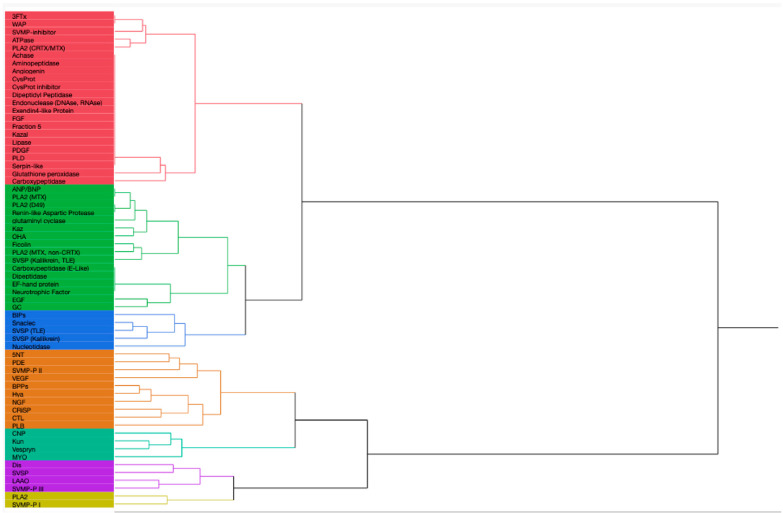Figure 5.
This dendrogram was created via the hierarchical clustering of proteins in rattlesnake venom by habitat type and distribution patterns. The proteins in red are most likely to be found in Central America. The proteins highlighted in green are most likely found in SW/S/W US and northern and southern Mexico. The proteins in blue are most likely to be found in SW/S/W US and south and western Mexico. The proteins in orange color are found throughout the range of rattlesnakes but are highly common in SW/S/W US and southern Mexico. Proteins highlighted by ocean green are mainly found in SE/SW/S/W US and northern Mexico. The proteins in purple color are present in high quantity throughout the rattlesnake range. The proteins in light green color are found in high abundance in central and southern Mexico. We want to emphasize that the patterns demonstrated in this study in the venom composition are limited as most of the studies did not specify the rattlesnake’s source, age, and diet composition at the time of venom collection.

